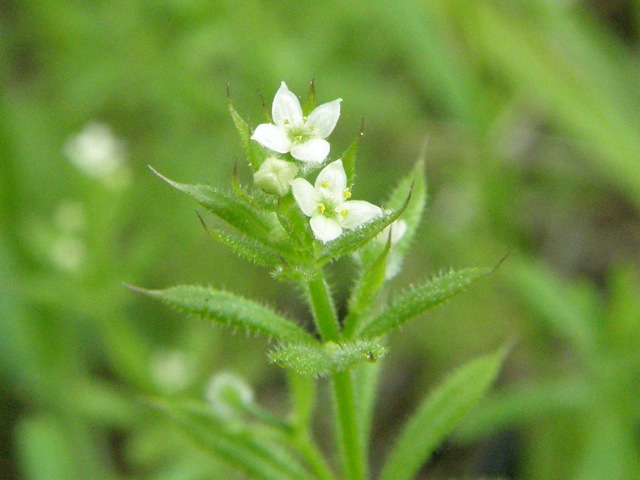Rubiaceae, the madder or bedstraw family.
Description:
Plant:
Weak-stemmed, creeping or reclining plant, 1'-2' high with tiny white flowers and
often hooked bristles on stems and whorled leaves. Annual.
Flowers:
White, tiny, about 1/8", with four petals, no sepals, and four anthers.
Flowers emerge from the axils of the leaf whorls, and form a sparse, leafy cluster.
Leaves:
Whorled, in groups of 6-8, lanceolate to obovate, 1"-2" long, margins lined with hooked
bristles, and tipped with a prominent spikelet.
Fruit:
A bur-like capsule covered with hooked bristles, about 1/4" in diameter, often in pairs.
Blooming:
May-June
Habitat:
Meadows, thickets, often reclining on other plants.
Comments:
Also known as goosegrass.
The common name "Cleavers" refers to the tendency of all parts of the plant to
stick or "cleave" to clothing or fur due to the bristles.
"Goosegrass" reputedly refers to geese liking the seeds.
The plant is supposedly edible as a potherb, but its bristly nature and small size might
tend to discourage casual consumption.
Where to find it:
I have seen the plant growing under the bushes along the northwest boundary of the park,
and also on the south shore of the pond, though most of the bedstraw there is another common
species, Galium mollugo.
